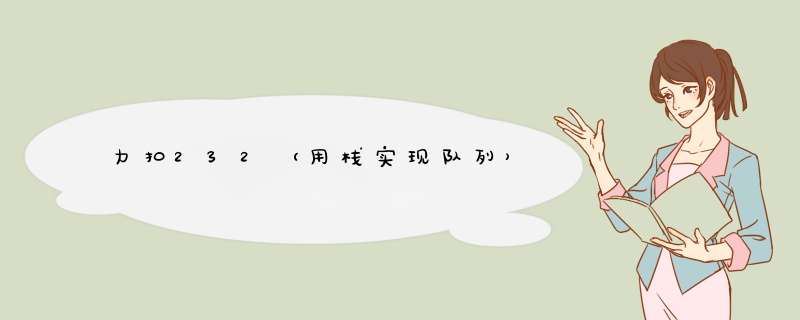
请你仅使用两个栈实现先入先出队列。队列应当支持一般队列支持的所有 *** 作(push、pop、peek、empty):
实现 MyQueue 类:
void push(int x) 将元素 x 推到队列的末尾
int pop() 从队列的开头移除并返回元素
int peek() 返回队列开头的元素
boolean empty() 如果队列为空,返回 true ;否则,返回 false来源:力扣(LeetCode)
链接:https://leetcode-cn.com/problems/implement-queue-using-stacks说明:
你 只能 使用标准的栈 *** 作 —— 也就是只有 push to top, peek/pop from top, size, 和 is empty *** 作是合法的。
你所使用的语言也许不支持栈。你可以使用 list 或者 deque(双端队列)来模拟一个栈,只要是标准的栈 *** 作即可。
示例:
输入:
[“MyQueue”, “push”, “push”, “peek”, “pop”, “empty”]
[[], [1], [2], [], [], []]
输出:
[null, null, null, 1, 1, false]解释:
MyQueue myQueue = new MyQueue();
myQueue.push(1); // queue is: [1]
myQueue.push(2); // queue is: [1, 2] (leftmost is front of the queue)
myQueue.peek(); // return 1
myQueue.pop(); // return 1, queue is [2]
myQueue.empty(); // return false
解题思路
- 因为要用栈实现队列,所以我们必须熟知栈和队列的结构特点以及它们的常用功能。用两个栈实现一个队列第一个栈用于“入队”,我们相当于面向过程编程,即对我们来说就是第一个栈用于压栈,第二个栈用于出栈。之所以符合3就能实现队列是因为:将栈1内的元素逐一出栈并压入栈2内,就可以实现原本栈1内的元素摆放顺序发生颠倒,即用两个栈实现先进栈的元素能够来到栈顶并做到先进先出的目的。
public class MyQueue {
Stack stack1;
Stack stack2;
public MyQueue() {
stack1=new Stack<>();
stack2=new Stack<>();
}
public void push(int x) {
stack1.push(x);
}
public int pop() {
if(!stack2.isEmpty()){
return stack2.pop();
}else{
while(!stack1.isEmpty()){
int topValue=stack1.pop();
stack2.push(topValue);
}
return stack2.pop();
}
}
public int peek() {
if(!stack2.isEmpty()){
return stack2.peek();
}else{
while(!stack1.isEmpty()){
int topValue=stack1.pop();
stack2.push(topValue);
}
return stack2.peek();
}
}
public boolean empty() {
return stack1.isEmpty()&&stack2.isEmpty();
}
}
欢迎分享,转载请注明来源:内存溢出

 微信扫一扫
微信扫一扫
 支付宝扫一扫
支付宝扫一扫
评论列表(0条)